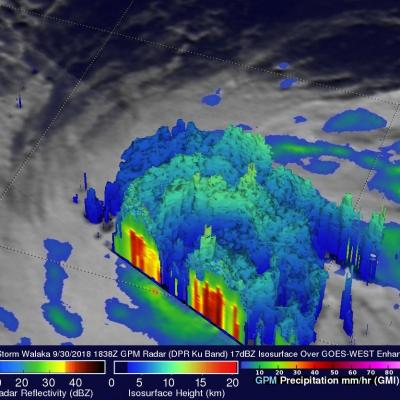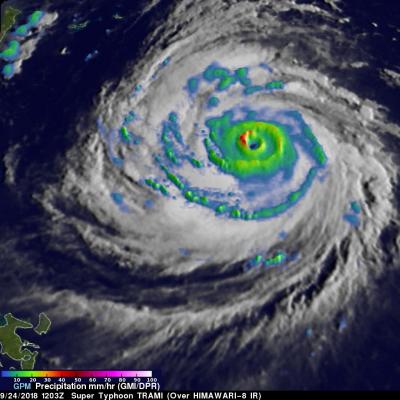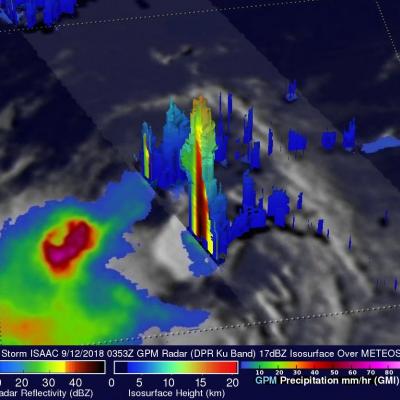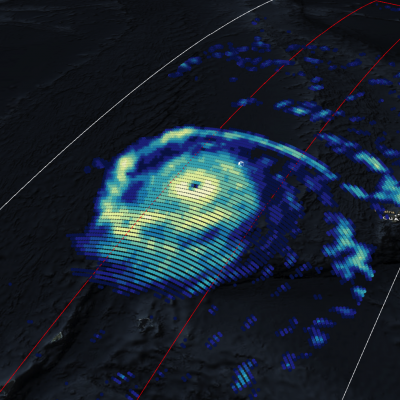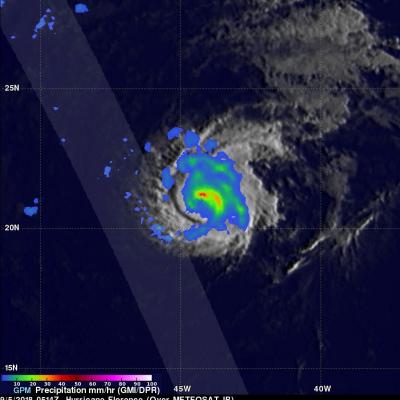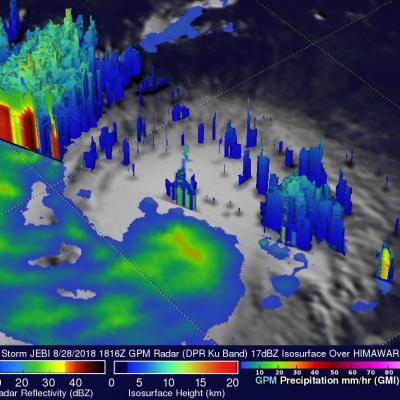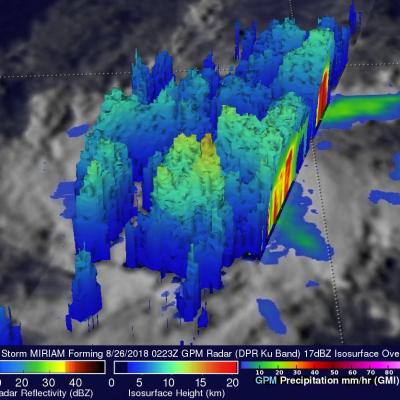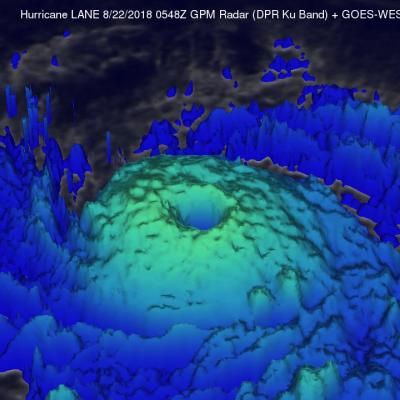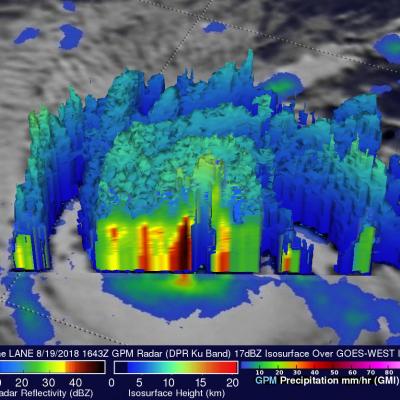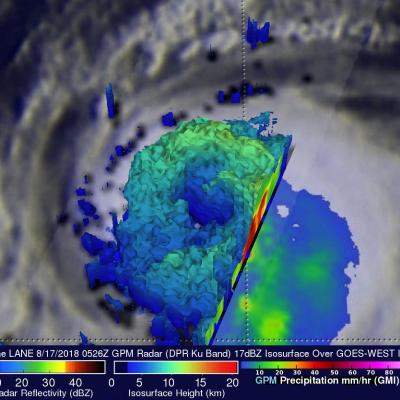GPM Sees Walaka Becoming A Powerful Hurricane
The GPM core observatory recently had a couple good looks at tropical storm Walaka as it was intensifying into a powerful hurricane. GPM passed directly over tropical storm Walaka when it was located south of the Hawaiian islands on September 30, 2018 at 8:38 AM HST (1838 UTC). Data collected by GPM's Microwave Imager (GMI) and Dual-Frequency Precipitation Radar (DPR) instruments showed that Walaka was well organized and very close to hurricane intensity. GPM's Radar (DPR Ku Band) data revealed intense convective storms in a large feeder band that was wrapping around the tropical storm's


